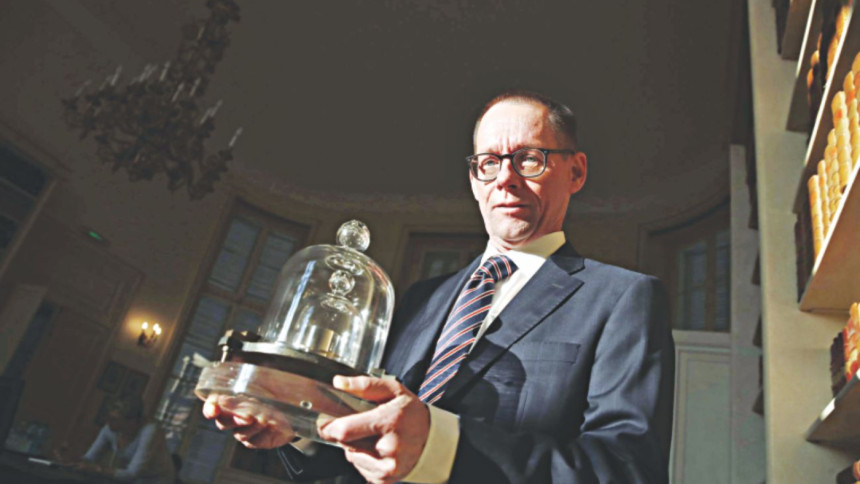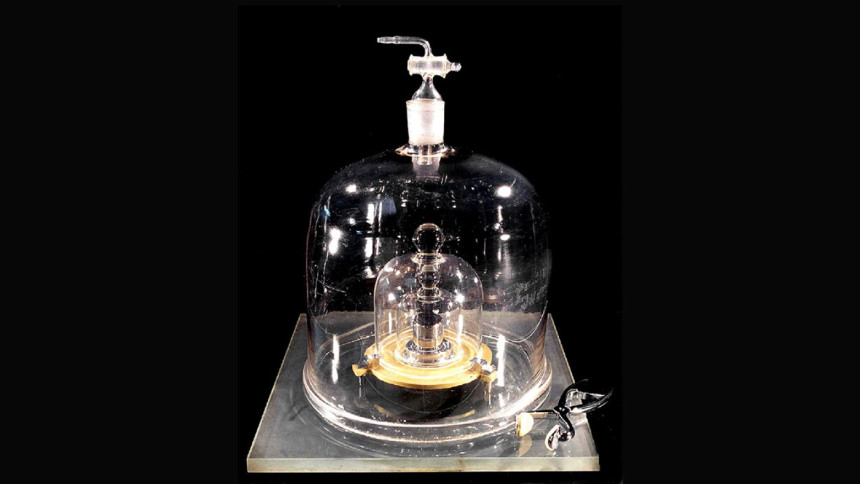Scientists redefine the kilogram

The kilogram is getting an update.
No, your bathroom scales won't suddenly become kinder and a kilo of fruit will still weigh a kilo. But the way scientists define the exact mass of a kilogram is about to change.
Until now, its mass has been defined by the granddaddy of all kilos: a golf ball-sized metal cylinder locked in a vault in France. For more than a century, it has been the one true kilogram upon which all others were based.
No longer.
Gathering in Versailles, west of Paris, governments are expected on Friday to approve plans to instead use a scientific formulation to define the exact mass of a kilo. The change is expected to have practical applications in industries and sciences that require ultra-precise measurements of mass.
And it will mean redundancy for the so-called Grand K, the kilo that has towered above them all since 1889.

Made of a corrosion-resistant alloy of 90 percent platinum and 10 percent iridium , the international prototype kilo has rarely seen the light of day. Yet its role has been crucial, as the foundation for the globally accepted system for measuring mass upon which things like international trade depend.
Three different keys, kept in separate locations, are required to unlock the vault where the Grand K and six official copies — collectively known as "the heir and the spares" — are entombed together under glass bell-jars at the International Bureau of Weights and Measures, in Sevres on the western outskirts of Paris.
Founded by 17 nations in 1875 and known by its French initials, the BIPM is the guardian of the seven main units humanity uses to measure its world : the meter for length, the kilogram for mass, the second for time, the ampere for electric current, the kelvin for temperature, the mole for the amount of a substance and the candela for luminous intensity.
Of the seven, the kilo is the last still based on a physical artefact, the Grand K. The meter, for example, used to be a meter-long metal bar but is now defined as the length that light travels in a vacuum in 1/299,792,458th of a second.
"This, if you like, is a moment of celebration because it's like the last standard remaining from 1875 that will finally be replaced by new innovation," Martin Milton, the BIPM director, said in an Associated Press interview. "Everything else has been recycled and replaced and improved. This is the last improvement that dates back to the original conception in 1875. So that's a tribute to what was done in 1875, that it's lasted this long."


 For all latest news, follow The Daily Star's Google News channel.
For all latest news, follow The Daily Star's Google News channel. 



Comments